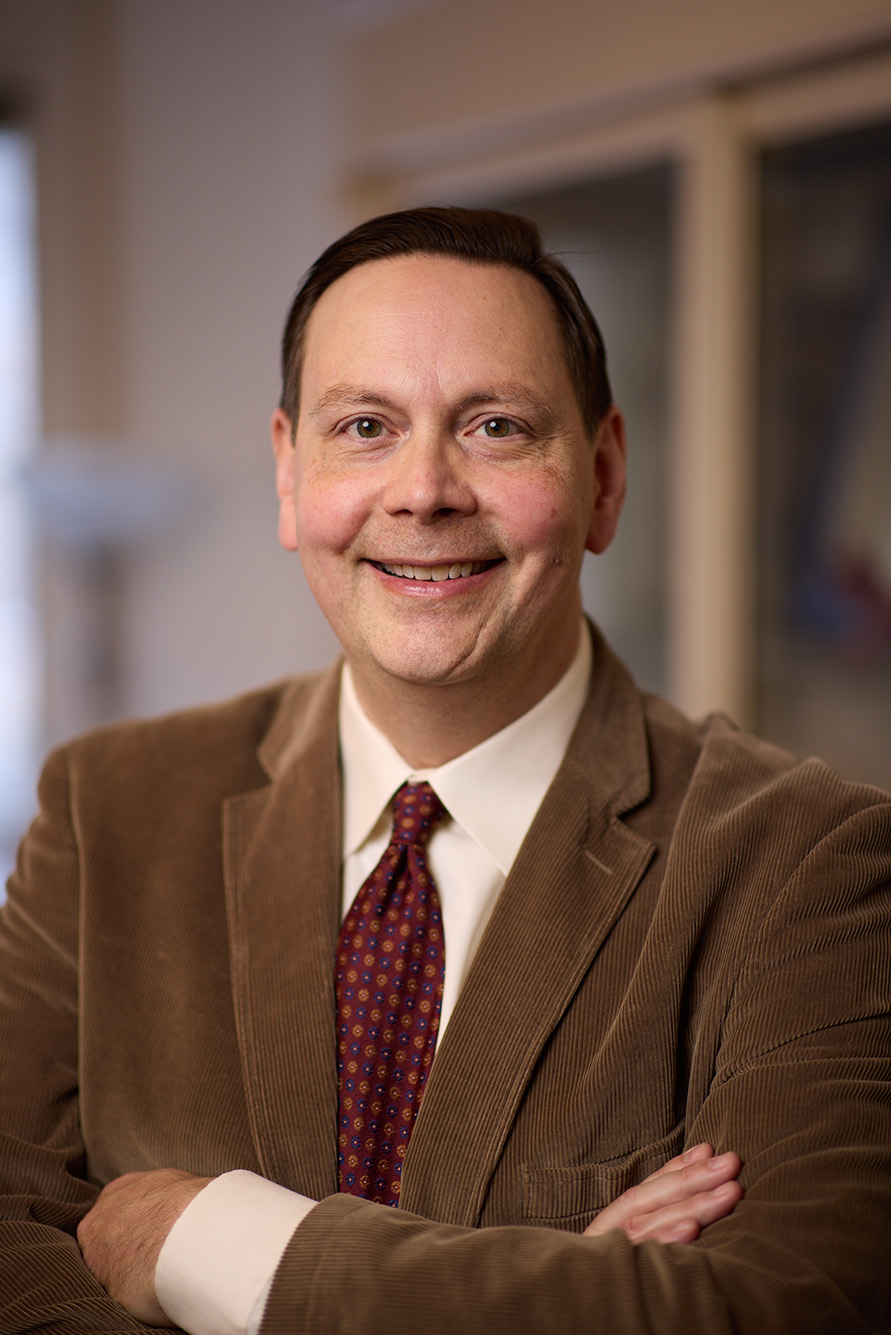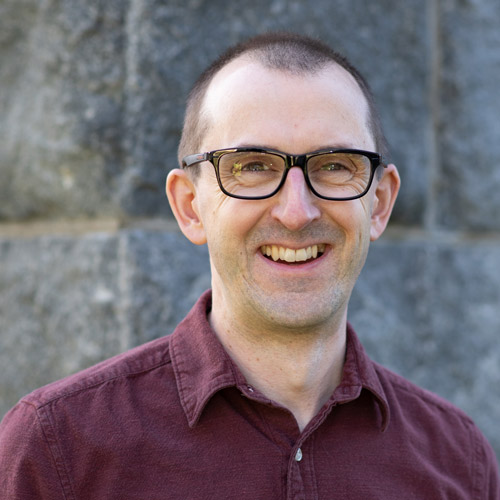Why Are So Many Religious Leaders Facing Stress and Burnout?
Faith leaders contend with low pay and a high exposure to suffering—problems compounded by the pandemic. A new project aims to study and support clergy mental health and well-being

Steven Sandage, a Boston University School of Theology professor of psychology of religion and theology, has found rates of post-traumatic stress disorder symptoms in clergy at levels higher than those in post-deployment military personnel. Photo by Dave Green, courtesy of the Albert & Jessie Danielsen Institute
Why Are So Many Religious Leaders Facing Stress and Burnout?
Faith leaders contend with low pay and a high exposure to suffering—problems compounded by the pandemic. A new project aims to study and support clergy mental health and well-being
Many people who experience trauma or mental health challenges turn first to religious leaders in their community for help. But assuming the role of spiritual and psychological care provider can take a toll on clergy and chaplains, causing high rates of stress and burnout. The pressure on religious leaders has only worsened during the pandemic. In a recent poll of US pastors, the faith-based research company Barna Group found that 38 percent had considered quitting full-time ministry in 2021.
Steven Sandage, the Boston University School of Theology’s Albert and Jessie Danielsen Professor of Psychology of Religion and Theology, has observed this in his own research. “We did a couple of studies with clergy where we found their rates of post-traumatic stress disorder symptoms were at an alarmingly high level—in fact, at a level that would be higher than post-deployment military personnel,” he says.
Sandage, who is also research director at the Albert & Jessie Danielsen Institute, which conducts research and provides clinical care at the intersection of spirituality and psychology, wants to help change that. He and his research team have received a $2.19 million grant from the Peale Foundation, which will allow them to explore ways to address the mental health needs of spiritual leaders and therapists in a five-year project. It’s the largest gift ever awarded by the foundation, which was founded by Norman Vincent Peale (GRS’24, STH’24, Hon.’86), a minister who was interested in religion and psychology.
The Brink spoke with Sandage—who has also studied humility in religious leaders—about clergy burnout, current gaps in care, and how he hopes to provide new resources to support mental health.
Q&A
with Steven Sandage
The Brink: You found rates of trauma among clergy at higher levels than in post-deployment military personnel. What’s causing such a high level of burnout?
Sandage: There’s a set of things that can make the job really tough for people who are in religious leadership. We see a lot of direct exposure to suffering. People in religious leadership get to be with folks in really wonderful times in life, but what’s sometimes underrated is the amount of direct exposure to suffering—difficult losses, deaths, existential crises, and often with a kind of unpredictability to it—they can get called in at a moment’s notice. For myself, as a psychologist doing therapy, I would never be called over to someone’s house after a family member had just died by suicide. And yet chaplains, clergy sometimes find themselves in situations like that.
Depending on the congregation, they might also be expected to be experts in finance, counseling, inspirational leadership, and event planning. Then the third big dimension is sometimes there are very few boundaries—there can be expectations of being on call around the clock. We’ve also seen in our research difficult relational boundaries, where, for example, board members, if they’re frustrated or angry at the leader, can sometimes be intrusive in ways that are really difficult—experiences of relational aggression have been prominent in our research with religious leaders. Then the final one is just that the levels of support and remuneration are sometimes small. When you take all of those factors together, it’s quite a complicated landscape for many religious leaders.
The Brink: And then the pandemic on top.
Sandage: It has been obviously a tipping point for many congregations and leaders. The adjustments that needed to be made, the declining attendance at services, the declining support, the multitude of losses have intensified all those factors [for burnout] I just mentioned.
The Brink: What does that mean for congregations and communities—and for the support their religious leaders can provide for them?
Sandage: If our faith leaders are under high risk of trauma, severe stress, and under-supported, there’s only so long that that’s a sustainable situation, and so that does inform a lot of the reasons for our project funded by the Peale Foundation. We’re concerned with finding ways to better sustain these caregivers, healers, and leaders in our community who give so much. When we see rising rates of mental health struggles or occupational burnout, it certainly doesn’t bode well for the caregiving. We need to remember that our leaders are human beings too.
The Brink: Where do most clergy go for help now and why hasn’t that been sufficient?
Sandage: Part of the reason that we want to do this project is to better understand that whole landscape: What are the practices that are helping sustain some clergy? Why are other clergy not able to access those resources, what are the obstacles to that? Anecdotally, from my experience, I can see that some clergy are plugged in to good peer support networks with other leaders; maybe their denomination or religious body offers some ongoing training and continuing education and support; maybe that leader accesses personal therapy or spiritual direction or retreats. But I definitely see other cases where leaders are quite isolated: maybe their particular congregation or religious body, for whatever reason—financial or philosophical—doesn’t offer all that much ongoing training or enrichment; maybe the other faith leaders they know in their community are more competitive than collaborative, or they themselves are. And so it’s hard for them to connect with other leaders. And again, the financial aspect is an important one: some leaders don’t have the kinds of income to access certain resources.
The Brink: What will be the first step in your Peale Foundation project?
Sandage: In phase one—this year—we’re conducting a national survey of caregivers to try to continue to better understand their particular stressors, and the factors and practices that help mitigate stress and contribute to well-being.
We’re also conducting research with students at the School of Theology. We want to think preventatively for people like them who might be moving into these vocations. And we’re going to do a continuing education event that will bring in spiritual leaders to talk about these issues of stress and burnout and create some community dialogue.
The Brink: How has your previous work at the Danielsen Institute informed this project?
Sandage: We discovered during the pandemic that there are some pretty accessible, convenient ways to offer support to leaders in these settings, and give them a place to connect, to process the impact of their work, and to try to deal with some of the profound existential and psychological challenges of their work. At the Danielsen Institute, we started offering Zoom-based relational spirituality support groups, and we’re going to expand on that program in phase two, which will be years two through five. Those will be led by clinical staff at the Danielsen Institute. They’ll still be Zoom-based, and we’ll have a research component where we try to evaluate the effectiveness of those groups, and learn what would make them more helpful.
The Brink: What else will the second phase involve?
Sandage: It will involve introducing online resources about self-care and well-being to spiritual leaders. We’ll do a series of education events, so that we can keep the dialogue going. Clergy members, chaplains, and therapists will be able to come to those events and help us continue to figure out how to better make use of these resources.
We also want to draw in other collaborators who are interested in these issues of formation, well-being, and overcoming suffering, so that we create a network committed to making a difference in helping folks on the front line. This includes researchers in the field of positive psychology, folks in the clinical mental health and psychotherapy communities, and people involved in various capacities in spiritual and religious communities across many traditions. Our vision is to bring folks together who have a stake in each of those areas and to make use of that interdisciplinary network to move our work forward.
The Brink: What advice would you have for any religious leaders reading this who are perhaps in a bad place themselves?
Sandage: I would encourage leaders—and this is part of what we’ll do in our project—to pause and to reflect on what are some of the resources, connections they could really use in their life. Then to boil it down to, “What’s the next step toward one of those resources?” It can be overwhelming to look at, “Oh, I need more peer support, I probably need a therapist, I need to get spiritual direction, I need to negotiate my salary.” It could be too much to do all of those things at once, so boil it down to the next step, trust that there are people out there who want to be helpful, and start to look for that.


Comments & Discussion
Boston University moderates comments to facilitate an informed, substantive, civil conversation. Abusive, profane, self-promotional, misleading, incoherent or off-topic comments will be rejected. Moderators are staffed during regular business hours (EST) and can only accept comments written in English. Statistics or facts must include a citation or a link to the citation.